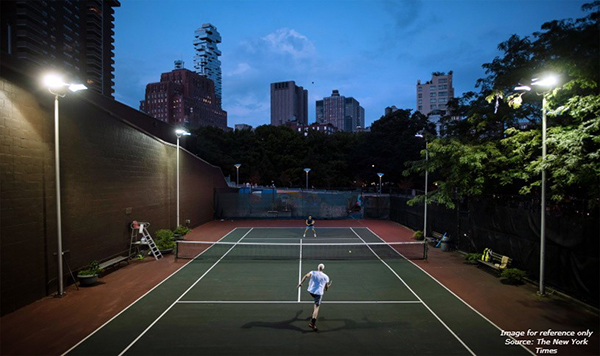
Ever wonder how the amount of light falling vertically or horizontally on the surface can make a huge difference? If not, it’s time that you give this concept its due importance. Failure to ensure that the right amount of light falls on the surface from the right angles can result in poor visibility. This can damage the reputation of your space and hinder the activities carried out in the area. However, to ensure the proper light levels, it would be best to measure them from vertical horizontal planes.
Illuminance is the amount of light that falls on a surface - calculated as the density of lumens per unit area. The standard unit to measure illuminance in the United States is footcandles. However, in many other countries, illuminance is represented in lux.
While illuminating an area, say, a tennis court from only one side can ensure sufficient horizontal footcandles, it might lack the required vertical footcandles essential to achieve the desired lighting results. Any object, person or piece of equipment will form shadows in the absence of sufficient vertical footcandles. This, as a result, might seriously impact the game of the players due to poor visibility. However, measuring the light levels from both horizontal and vertical planes will even out the light and reduce shadowing.
No, it is not necessary that a symmetrical lighting design will also render sufficient or balanced vertical illuminance. For example, there might be cases where a symmetrical or balanced lighting design might cause light trespass near the property line. To avoid this trespassing of light, you will need to redirect, shield, or replace the existing fixtures with lower-wattage units. Now, in this particular situation, your design is no longer symmetrical and also the vertical illuminance is far less even, however, you now have the desired results with light falling on the right places and minimized shadowing.
.jpg)
What is a photometric study you might ask? A photometric study is basically a computerized simulation of a lighting plan which helps you visualize lighting effects in a 3D space, optimize lights selection, increase energy efficiency, and enhance security. Moreover, a photometric study is the easiest method to calculate horizontal and vertical illuminance even before a project is built and decreases the possibilities of making errors at the time of execution. Need a photometric analysis for your space, click here.
Looking for a new lighting fixture to brighten up your space, but confused about the lumens that your space might require? IKIO is here to help! We at IKIO have a team of lighting specialists who through their knowledge in photometric studies can help you get the exact fixtures required to illuminate your right. What else, IKIO is your go-to brand for all your LED lighting requirements whether commercial or industrial, residential or horticulture. Being our client you will have a plethora of options in all these categories, each one exclusively designed to meet your expectations to the utmost level. To find out more about our products in different categories, click here.